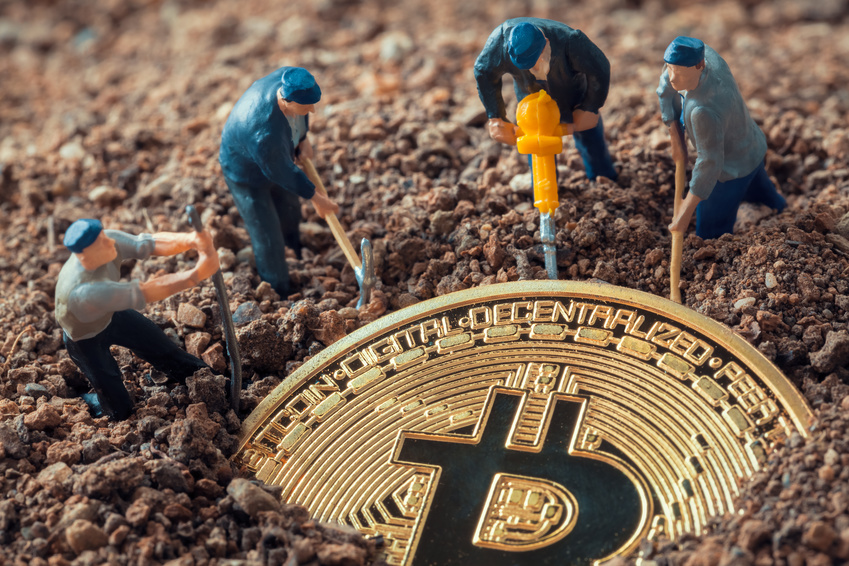
At Michaels, we believe that understanding the big picture is critical to doing things right. Understanding can be an anchor to knowing what makes sense, or it involves the objectives of the client, so I know why my little brick is important to building the cathedral[1].
This post is not merely about Bitcoin, but starts with energy implications, setting the stage for applications related to our industry.
Currency
What is currency? It is something physically small or virtual. A somewhat old virtual currency is the personal check, which is a contract to assign virtual dollars from one account and deposit them to another account. In short, currency allows commerce to happen without physically swapping things of negotiated value, aka, bartering – like swapping Twinkies for a beaver pelt and a mallet.
Currency and the Gold Standard
Some of the oldest currencies lasted centuries in the form of precious metals. The most valuable precious metals were physically the most enduring – resistant to corrosion. They also had great value because they were rare, costly to mine, and essentially finite.
Gold emerged as the currency of choice. Gold and the value of the dollar were locked until 1971, when Nixon, in his infinite wisdom and under budget strains to fund the Vietnam war, broke the link and ended the gold standard. It was meant to be temporary.
Universal truth: what gives power to Washington DC, stays in DC. There is no such thing as a temporary tax or program, and there was no such thing as reinstalling the gold standard. Dumping the gold standard gives enormous power to a few unaccountable eggheads who take direction from hard leaning politicians in Washington. The result – nothing but the U.S. Government gives value to the dollar. During the gold standard, the dollar was pegged to gold and all other international currencies were pegged to the dollar.
Another truth: the federal debt and deficits we have today would not be possible with the gold standard.
Bitcoin
Unless you avoid news like I avoid pop music, you have heard of Bitcoin, and its meteoric rise last year. As of typing this word, the value of Bitcoin rose 16.66 times its value from a year ago.
Bitcoin is virtual gold. I have always seen it called a virtual currency. A dollar is virtual currency, the value of which fluctuates with scarcity (inflation), interest rates, money supply, and virtual currency creation like “quantitative easing.”
Bitcoin is far more like virtual gold than currency because:

- It has limited supply and as a result, is more difficult to mine each new Bitcoin. They are precisely finite in number with about 21 million to be mined.
- It is undergoing a speculative frenzy. You can buy and sell Bitcoin like a stock, pork bellies, or frozen concentrated orange juice, which reminds me of one of my favorite movie scenes of all time (caution: Eddie Murphy language).
- No government or group of unaccountable eggheads controls or manipulates it.
- Bitcoin, like gold, is very energy intensive to mine.
Bitcoin Energy Drain
Bitcoin was developed to be a self-perpetuating currency. To use Bitcoin as a currency, buyers submit Bitcoin transactions (payments to a public Bitcoin address) to a distributed network of computers (nodes) worldwide. All nodes keep a copy of a public ledger of every trade.
Bitcoin miners accumulate transactions into blocks. Each block has a complex mathematical problem, a cryptographic hash. When the block is hashed with a random number called the nonce through brut forced computation, the block is solved, and you win, node[2].
Nodes represent enormous computing power, and their mining owners and employees compete to solve the problem for their reward (for now): freshly minted Bitcoins, each worth roughly $16,000 when this Rant post went to virtual press.
Once solved, blocks are added to the blockchain. The chain here represents a sequential series of transactions. Each block references the previous block in the chain. With the entire blockchain of transactions going back to the beginning (2009) and distributed on zillions of nodes worldwide, fraud by hacking is (pun alert) virtually impossible.
Solving one of the blocks’ “special” mathematical problems would typically take a single computer years to accomplish. Nobody wants to wait that long for their transaction to clear. To maintain a transaction-clearing block-solution speed of about 10 minutes, solutions are made more difficult by recalibrating the problem, so to speak, every two weeks. In one year, the difficulty may increase tenfold.
I think by now, you can see how the computing power required to mine Bitcoins, which for now is synonymous with validating Bitcoin transactions, is growing very large. How large? About 35 billion kWh, or $4.2 billion in electricity cost. That is roughly ten 500 MW power plants of load, and it’s growing fast (tenfold?). Wow!
For more perspective, the entire banking system, ATMs, branch offices, etc., are estimated to use 650 billion kWh per year. That isn’t growing. Bitcoin mining energy is growing rapidly.
How will it end? Tune in next week for guesses galore!
Thank you to Ryan Brubaker, Manager – Software Development, for contributing to this post.
[1] I’m laying brick. I’m building a wall. I’m building a cathedral. See the perspective?
[2] Bitcoin nerds relax. Readers have already suffered enough gibberish without explaining all scenarios.






